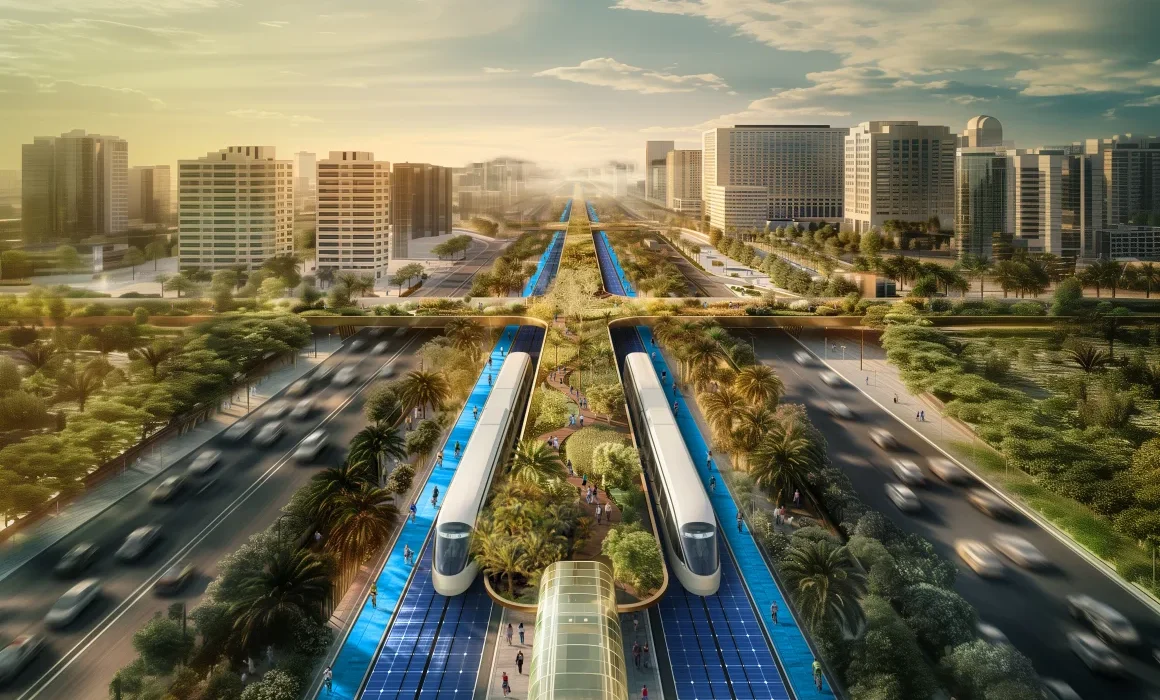Dubai Unveils Plans for World’s Maiden Green Highway with 1 Million Trees

Dubai has announced plans to construct the world’s first green highway, dubbed the Dubai Green Spine, a transformative 64-kilometre corridor along Sheikh Mohammed bin Zayed Road (E311), featuring 1 million trees, solar-powered public transport, and eco-conscious urban infrastructure.
The project, spearheaded by UAE-based sustainable design firm URB, is designed to drastically cut emissions, combat urban heat, and enhance quality of life by integrating nature and mobility into one futuristic corridor. When completed, the Dubai Green Spine is projected to reduce more than 1 million tonnes of carbon emissions annually.
“This isn’t just a transportation project. It’s a blueprint for how future cities can grow green,” said URB CEO Baharash Bagherian.
Unlike conventional highways that cater almost exclusively to cars, the Dubai Green Spine envisions a multi-layered green infrastructure that blends ecological preservation with urban convenience. The design includes the planting of one million trees—a diverse mix of native and drought-resistant species such as Ghaf and Sidr strategically lined along the highway. These will be supported by advanced irrigation systems, water recycling technologies, and landscape strategies such as xeriscaping and mulching to ensure long-term sustainability in Dubai’s arid climate.
The project will also incorporate a 300-megawatt solar energy system to generate clean power for its infrastructure, including a network of electric trams that will run along the highway. These solar-powered trams will form part of a new eco-mobility system complemented by dedicated lanes for pedestrians and cyclists. This will not only ease traffic congestion but also promote healthier and more environmentally friendly commuting.
In addition to its mobility components, the highway will integrate vertical farms, urban gardens, and green parks that contribute to local food security, reduce the urban heat island effect, and offer public recreation spaces These features are designed to connect neighbourhoods and create what planners describe as “a living, breathing urban ecosystem.” The entire development will be supported by smart technologies, including IoT-powered monitoring systems, climate-responsive architectural design, and bioswale drainage to manage water and prevent flooding.
The Dubai Green Spine aligns with the city’s 2040 Urban Master Plan, which aims to position Dubai as one of the world’s most livable and sustainable cities.
The development is expected to be rolled out in four phases over the next decade, although it remains in the design and proposal stage pending formal approval from Dubai’s municipal authorities.
While the proposal has generated excitement worldwide for its innovation and environmental potential, experts acknowledge the project’s challenges chief among them, the need for long-term maintenance, financial sustainability, and environmental adaptability. Maintaining a massive green infrastructure in one of the hottest climates on Earth will require precise execution, continuous monitoring, and commitment to eco-conscious urban management.
Nevertheless, URB remains optimistic, citing the use of local vegetation, recycled water systems, and climate-adaptive landscaping as key solutions.
Urban planners and environmentalists have hailed the Dubai Green Spine as a bold and visionary leap forward. If realized, it could become a global model for how infrastructure can be transformed into sustainable, inclusive, and climate-resilient public space.
As the world watches, Dubai’s green highway is poised to redefine how cities can evolve beyond concrete sprawl and become lush, interconnected corridors of the future where mobility, sustainability, and livability converge.









